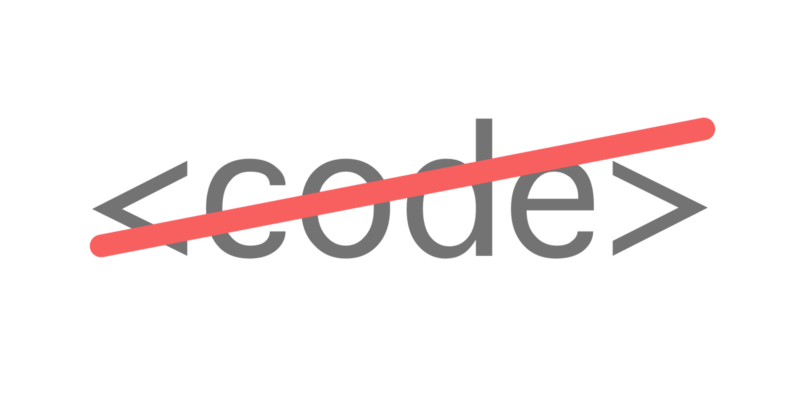The Code-Free Revolution
There’s been an awakening. Have you felt it?

Building apps without coding has been a long time joke among my more technical friends. The very idea is belittled, ridiculed, dismissed.
I blame Dreamweaver. Adobe’s early attempt at a WYSIWYG web creation tool backfired, it’s bloated output created a distrust in visual programming tools that still hasn’t healed, 20 years after its introduction.
Only 0.5% of the world’s population can code. We’re still early in the digital transformation and many industries are yet to be digitized. Also, websites and mobile apps are still growing 30% yearly. In short, there’s no way those 0.5% can support the rising demand for apps and services.
I don’t think the solution is to teach everybody to code. System thinking, logical problem solving — all this is great, but coding is not productive enough for most people. Code is too low-level, the equivalent of requiring a mechanics degree to drive a car. We’ve had the digital computer for 70 years now, but coding hasn’t changed much in that time. Computers need to think more like humans, not the other way around.
“Computers need to think more like humans, not the other way around.”
But suddenly the code-free tools are everywhere: IFTTT and Zapier. Stamplay and Tray.io. Bubble and Weld. Also, learning resources and communities are rising: The Code-Free Startup and NoCode.tech, for example.
And the success stories followed, e.g. how Tara Reed built Kollecto or how Marcus Tonndorf built a landing page for Hexlox.
So, are software engineers becoming redundant? Not at all, they are just pushed up the chain to more challenging programming tasks. Instead of styling CSS in WordPress themes, they can now focus on building better algorithms and tools.
I think this is the beginning of something big. It’s a democratization of technology. It won’t come over night, but it will be a beautiful thing.
PS. Would love your feedback. Join the conversation with hashtag #CodeFree